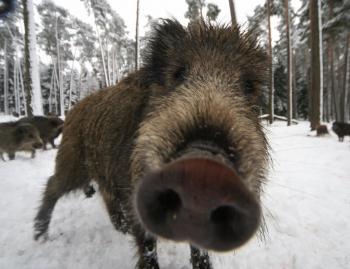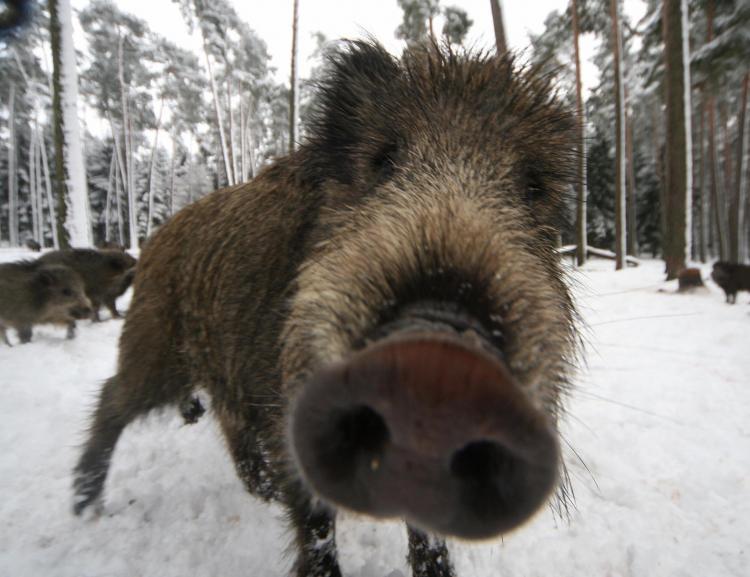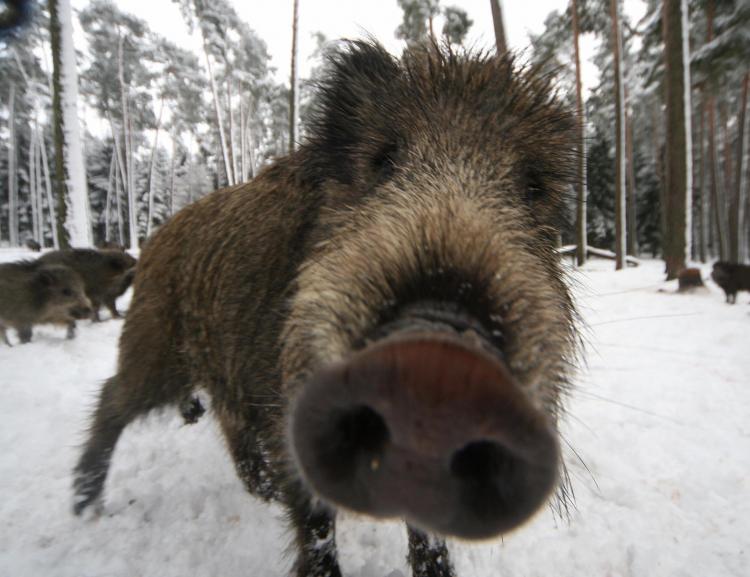Swedes are fond of nature, and many go freely to pick berries and mushrooms in the summer and fall as allowed by their “right to public access,” but nowadays some are getting concerned about the issue of dangerous animals.
Sweden has a unique law called ”allemansrätten”, which translates as ”everyman’s right,” but the proper English term is ”right to public access.” It states that everyone has a right to move around more or less freely in the countryside as long as one shows care and consideration for both people, animals and the environment.
However, certain potentially dangerous wild animals are growing in number. Wild boars, for instance, are sometimes planted as game and kept as cattle but escape and procreate. In certain places in the south and center of Sweden they are becoming quite common, especially when there are lots of acorns.
A wild boar that feels threatened is dangerous and not something one wants to encounter while taking a walk. Farmers also see increased severe damage to fields and crops, reaching the limit of what’s acceptable. There is currently collaborations between farmers and hunters to solve these problems.
The indigenous brown bear is another animal causing trouble. Some years ago the bear was rare in Sweden, so measures were taken to increase the bear population. It has led to a situation where people in certain areas, especially in the north of Sweden, suddenly run the risk of running into bears. A couple of fatal and near-fatal maulings in recent years gained a lot of media attention, but the risk of getting hurt by the normally shy brown bear is still very low.
The countermeasure against bear attacks, supposedly, is pepper spray. According to Swedish public service radio, SR, 90 percent of all bear attacks in Alaska are averted with the aid of pepper spray.
Swedes picking berries might feel better with pepper spray in their pockets, but the best way to be safe is probably to learn how to behave if you run into a bear. Information on how to handle bear encounters are readily available on the Internet and in other places for Swedes.
Either way, the increased population of a few potentially dangerous animals are unlikely to deter the Swedes or the many tourists visiting the country from enjoying its vast, unspoiled forests and roaming the countryside. Many people from other European countries with little unexploited land and no such thing as right to public access flock to Sweden each year, especially during the lovely summer months.
Sweden has a unique law called ”allemansrätten”, which translates as ”everyman’s right,” but the proper English term is ”right to public access.” It states that everyone has a right to move around more or less freely in the countryside as long as one shows care and consideration for both people, animals and the environment.
However, certain potentially dangerous wild animals are growing in number. Wild boars, for instance, are sometimes planted as game and kept as cattle but escape and procreate. In certain places in the south and center of Sweden they are becoming quite common, especially when there are lots of acorns.
A wild boar that feels threatened is dangerous and not something one wants to encounter while taking a walk. Farmers also see increased severe damage to fields and crops, reaching the limit of what’s acceptable. There is currently collaborations between farmers and hunters to solve these problems.
The indigenous brown bear is another animal causing trouble. Some years ago the bear was rare in Sweden, so measures were taken to increase the bear population. It has led to a situation where people in certain areas, especially in the north of Sweden, suddenly run the risk of running into bears. A couple of fatal and near-fatal maulings in recent years gained a lot of media attention, but the risk of getting hurt by the normally shy brown bear is still very low.
The countermeasure against bear attacks, supposedly, is pepper spray. According to Swedish public service radio, SR, 90 percent of all bear attacks in Alaska are averted with the aid of pepper spray.
Swedes picking berries might feel better with pepper spray in their pockets, but the best way to be safe is probably to learn how to behave if you run into a bear. Information on how to handle bear encounters are readily available on the Internet and in other places for Swedes.
Either way, the increased population of a few potentially dangerous animals are unlikely to deter the Swedes or the many tourists visiting the country from enjoying its vast, unspoiled forests and roaming the countryside. Many people from other European countries with little unexploited land and no such thing as right to public access flock to Sweden each year, especially during the lovely summer months.




